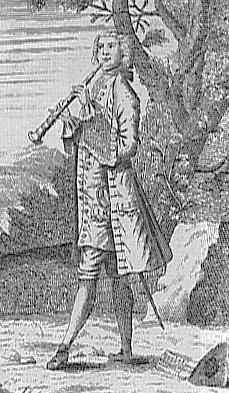Fashionable men’s shoes in the early 18th Century had high but sturdy heels, painted red for court wear and high fashion, a high tongue, and long square ended toes. Informal men’s shoes had lower heels and shorter wider toes, and were invariably made of black leather. Shoe buckles became the prime focus of men’s shoes for most of the century until the late 18th Century when political revolutions prompted members of the radical left to discard them as decadent aristocratic luxuries. Each individual handmade costume helps to create a spectacular picture of the sights of the 18th century.
Wigs and coats
In 1624 Louis XIII went prematurely bald. He disguised this with a wig starting a fashion which became almost universal for European upper middle class men by the beginning of the 18th Century. Wigs were made of horsehair, yak hair and human hair, the latter being the most expensive. Wigs were very expensive. A man could outfit himself with a hat, coat, breeches, shirt, hose, and shoes for about what a wig would cost him. A wig also required constant care from a hairdresser for cleaning, curling, and powdering. The predominant cut of coats in 1700 was full skirted but soft with strong vertical lines introduced with rows of buttons, long hanging cravats, and bottomed wigs. As women began to adopt the full skirted pannier style, men’s dress did likewise, expanding their skirts through the 1740’s, till the trend reversed, and coat skirts softened again and were cut less fully. By 1760 coats were being cut away from the front, and vest were cut at hip length. The 1770’s introduced the small standing band collar and small flat collar. The 1780’s are marked by shorter waistcoats, and fold over collars. By 1800 even aristocratic formal wear owed more inspiration to middle class and revolutionary dress then it did to its aristocratic forbears, making the dark three-piece suit the first and longest lasting Revolutionary Uniform to be adopted by all classes.
